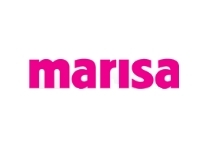Marisa
Accessories / Apparel / Bags / Jewelry / Shoes / Underwear & Lingerie
Founded in 1948, in the city of São Paulo, Marisa is the largest network of fashion and lingerie stores for women, and one of the largest department store networks offering clothing for women, men ...
Founded in 1948, in the city of São Paulo, Marisa is the largest network of fashion and lingerie stores for women, and one of the largest department store networks offering clothing for women, men and children in Brazil. With more than 340 stores and 4 distribution centers, Marisa commercializes, under its corporate brand “Marisa” —among other famous brands— a wide range of quality products based on the latest fashion trends, segmented by lifestyles and with an excellent cost- benefit ratio.Brand Details
Founder
Bernardo Goldfarb
Brand Strategy
Market segment
Mass Market
Core business
Apparel
Targets
Men, Women, Kids
The financial data for this brand is limited.
Contact us for income statementOur team will check for the data and get back to you shortly.
